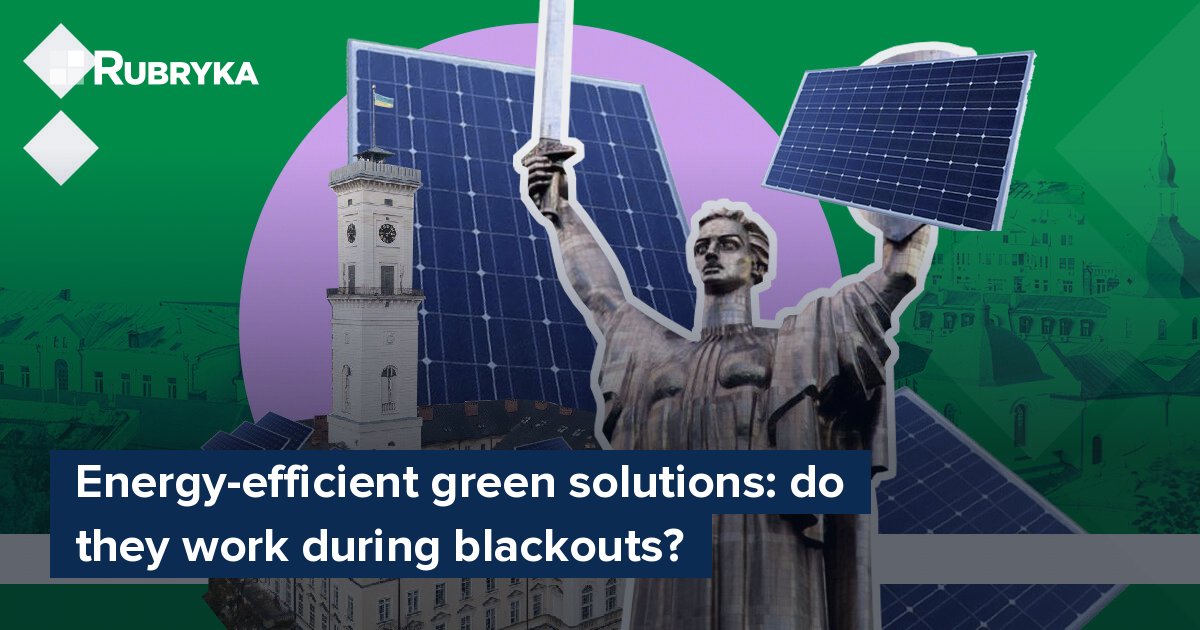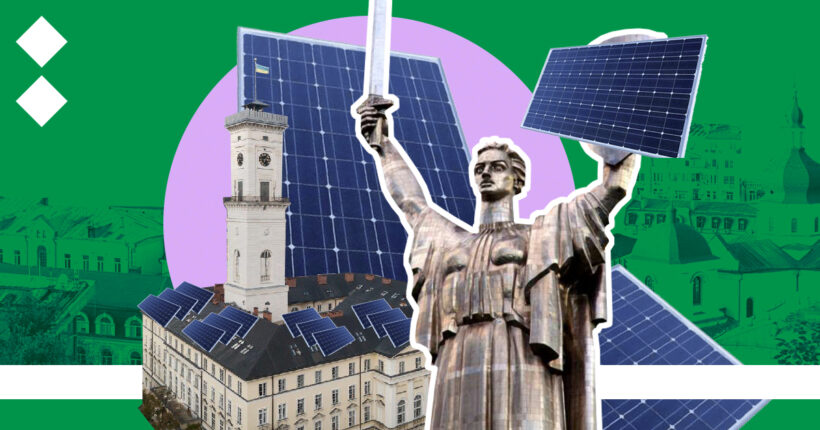
What is the problem?
Power outages, which according to the most optimistic forecasts, will last until the end of spring, force us to adapt and find new solutions. Entire city areas become humming beehives several times a day because of the sound generators make while working.
This is a convenient but not an ecological solution. At a time when the whole world is striving for decarbonization, we smoke the streets with spent diesel and gasoline. However, there are greener alternatives — let's learn about them.
What is the solution?
Green city on solar energy – myth or reality?
The significant scale of the destruction of the energy infrastructure has caused a new wave of interest in small RES facilities (renewable energy sources, — ed.), which would provide households, communal or public buildings, and condominiums.
With the increase in attacks on Ukraine's centralized energy infrastructure, demand is growing: people seek an independent power source covering minimal energy consumption needs. According to the data provided by the media platform "Ukrainian Energy," the demand for domestic stations has increased ten times and for industrial facilities — four to five times.
Wind power plant, solar panels and other solutions in condominiums
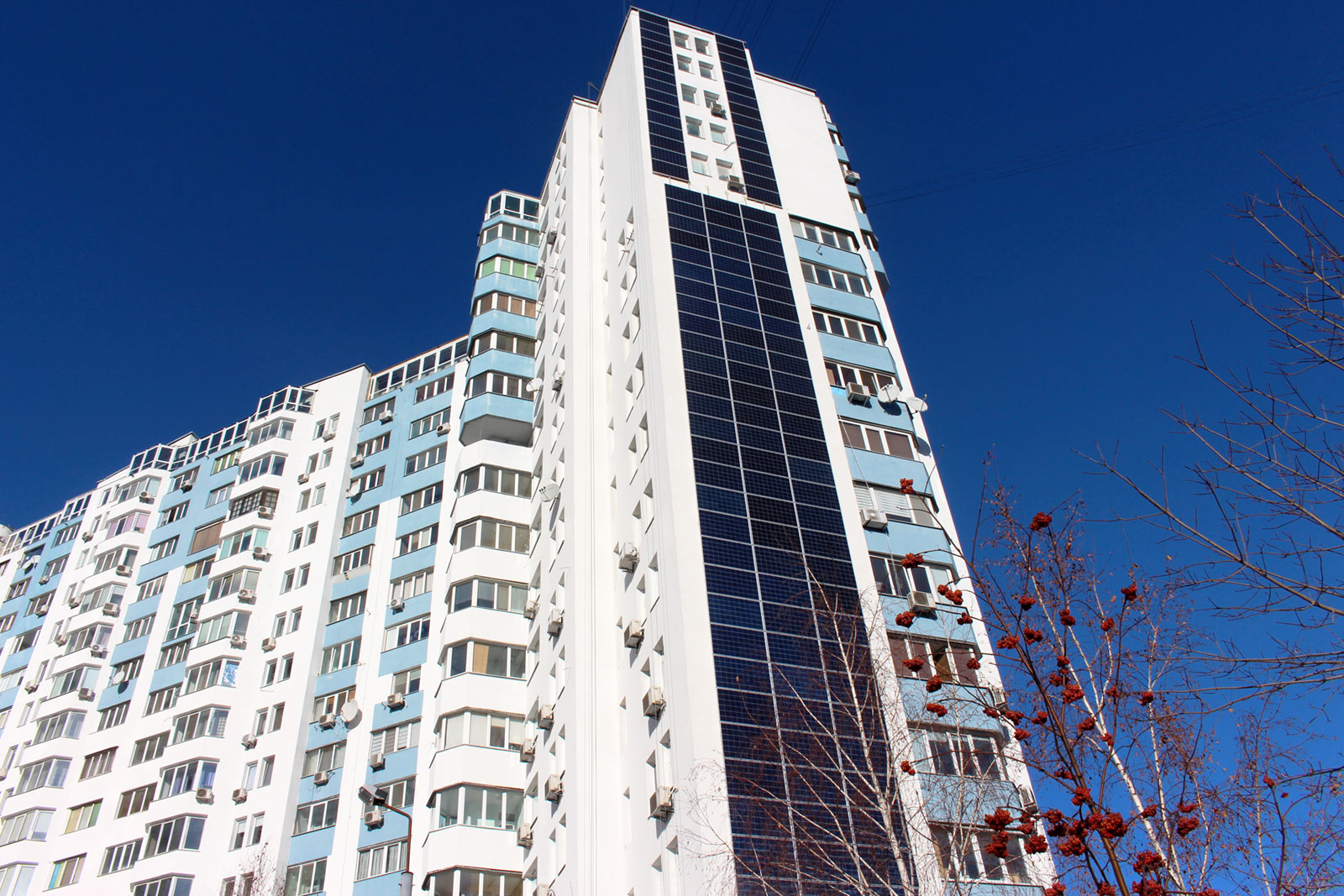
"Oberih na Poznyakah" condominium
This capital building with 422 apartments and 26 non-residential premises was built in 2003. There are 135 solar panels on the building facade and a wind power plant on the roof.
The story of turning the house into a more energy-efficient one began in 2018 when a decision was made to reduce heat consumption and the cost of paying for electricity. At first, the building administration followed the path of all energy-efficient condominiums: insulated the house's facade, replaced windows and doors and installed battery-powered regulators, replaced the lighting with diodes, and installed motion sensors. This allowed residents of an energy-efficient building in Kyiv to save at least 100,000 hryvnias per year on heating and electricity.
The next stage was in 2019 — installing solar panels with a capacity of 38 kW and nine windmills, which provide 18 kW, cost 5 million, and had to pay off in 8-10 years.
The first money for purchasing solar and wind power plants came from the city budget under the "70/30" joint financing program. It was a financing program for the best energy-efficient projects to modernize residential buildings in Kyiv. The program involves co-financing: 30% is paid by residents, and 70% by the city budget. Then 9.5 million were borrowed from Ukrgasbank at a rate of 21%, on the condition that the owners of each apartment would pay an average of $8 per month for 5 years, or to be precise, 0.25 cents for each square meter.
But there is a but.
Will it definitely work?
"You can't even charge your phone from all these solar decorations…"

Residents of the house are outraged that they have to pay loans for solar panels that "do not work" now in conditions of blackouts. Their anger can be understood because they do not receive electricity from renewable energy sources and sit without electricity, just like others. That is why solar panels are called decorations and tinsel.
Others blame the journalists who called the house "energy-independent" and "autonomous," emphasizing that the panels were made when there was no idea that one day Ukraine would face constant emergency blackouts.
Energy efficiency does not equal energy independence
The presence of solar panels and a wind farm on the house does not allow people to use electricity — it simply does not reach the house because has a grid inverter and the system is designed for a feed-in tariff — a policy mechanism designed to accelerate investment in renewable energy technologies by offering long-term contracts to renewable energy producers.
Svyatoslav Pavlyuk, an engineer, explains that network inverters have stations that were calculated to work in the feed-in tariff — they adjust to 50HZ from the network, and when there is no network frequency — "go blind and turn off." This means that the panels become useless without redirecting electricity to the house network. They also cannot produce electricity for sale at this time.
The purpose of installing RES stations and the entire thermal modernization of the house is to cover part of the electricity payments, which is also used for heating, and not to make the house completely autonomous."
And it does work: the average heating cost per season is about 0.3 cents per square meter. This is significantly different from the cost of heating in neighboring houses — 0.6 cents.
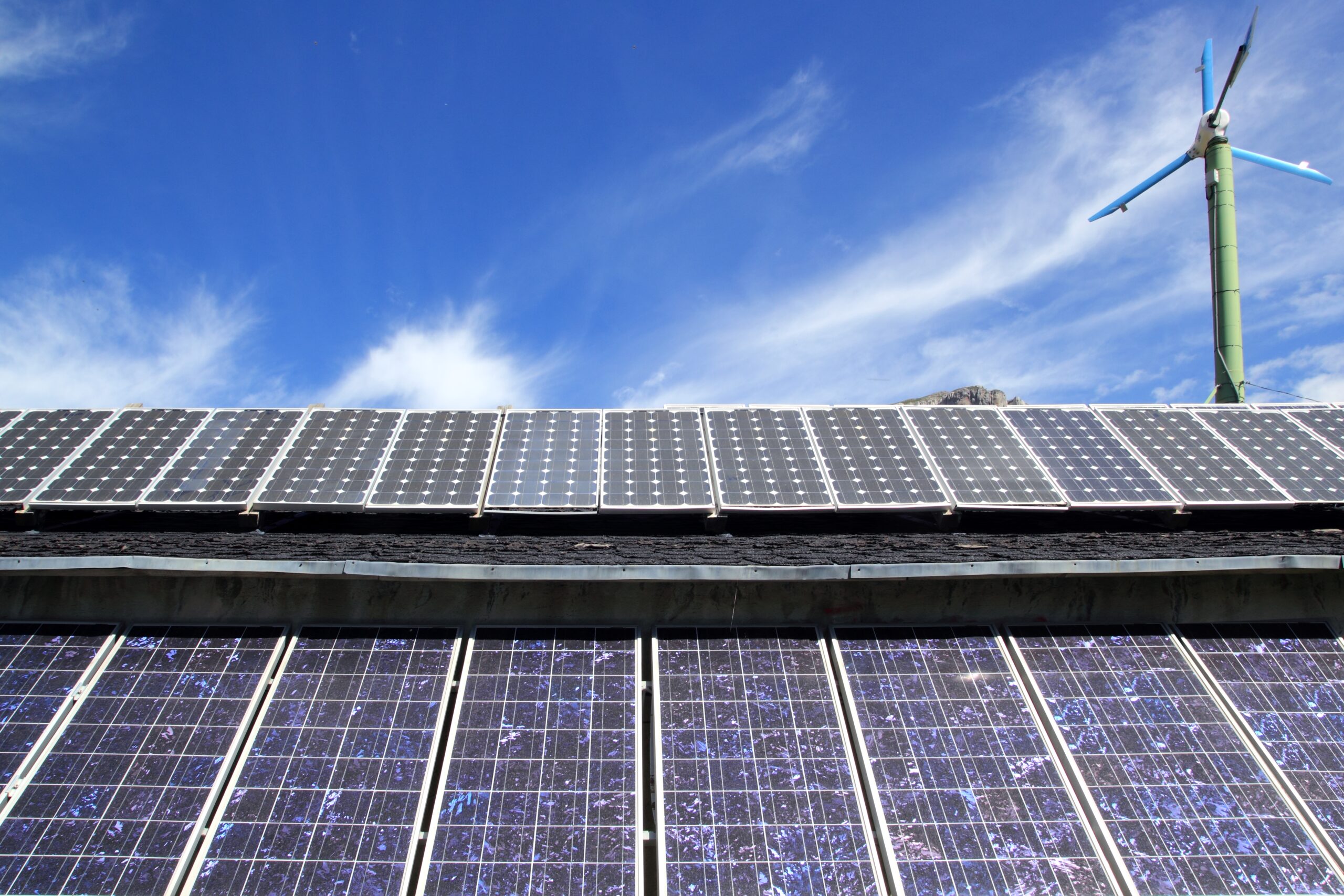
What is the solution?
An entire field of solar panels is needed to provide such a house with electricity from the sun. It is impossible to do this in urban conditions.
But technically, the house can use electricity produced by solar panels. It can cover part of the electricity consumption for elevators, lighting of the house territory and children's playgrounds, and lighting in common areas, for example, the entrance.
To make this possible, it is necessary to:
- install a hybrid or autonomous inverter;
- determine exactly where it would supply electricity (elevator/water heating/entryway lighting).
In case of power outages, the panels would "switch on" and supply the electricity in the required direction. Svyatoslav Pavlyuk comments:
"Adding another hybrid or stand-alone inverter and rethinking exactly where it will deliver power will make a difference. These panels won't supply electricity for the whole house, but they supply to a part of it."
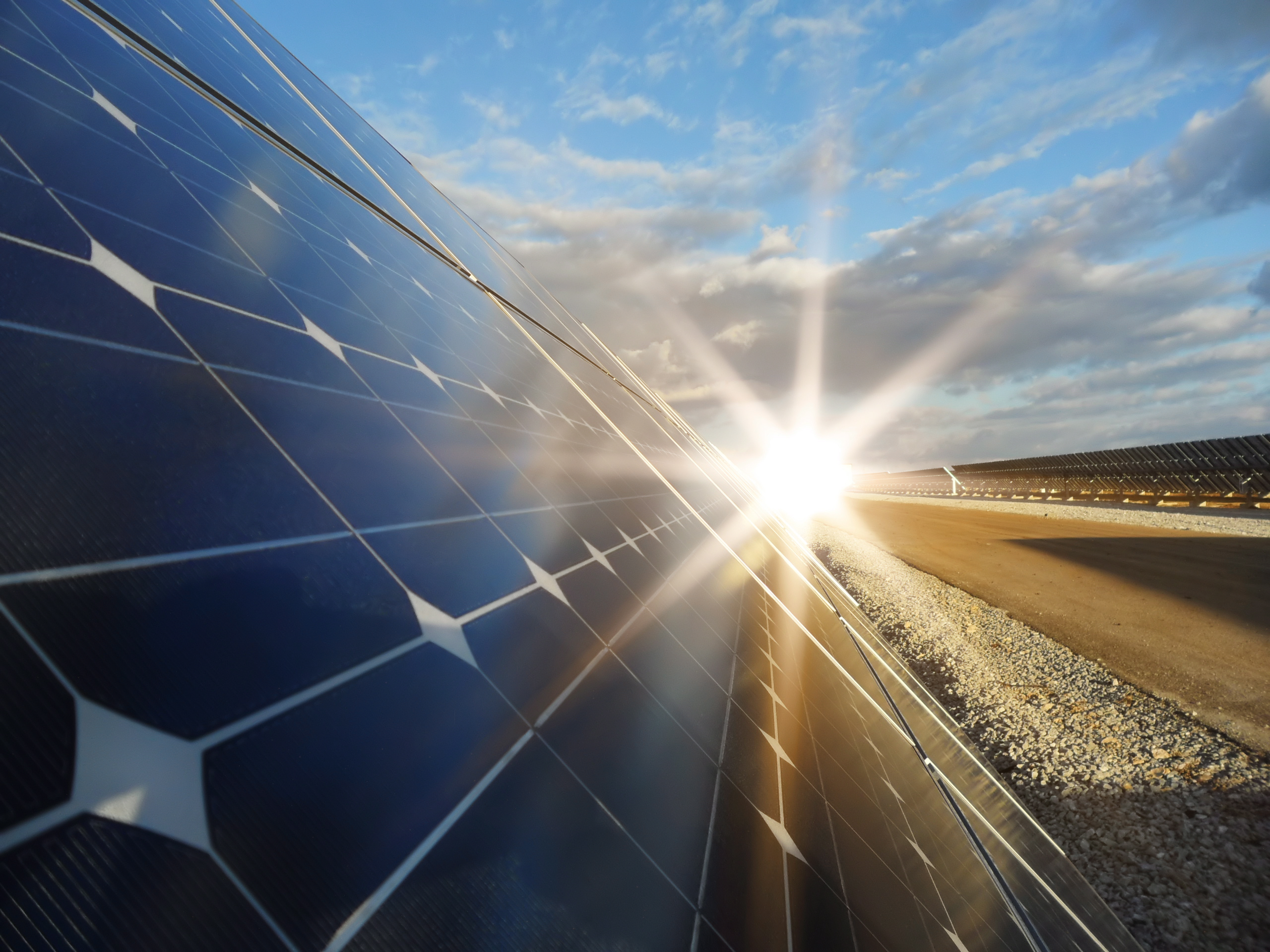
When it is difficult to agree with neighbors
A private solar power plant on the roof of a high-rise building
What to do if negotiating with a condominium and raising funds for solar panels for an entire apartment building is long and expensive, and you need a quick solution? The issue was resolved by a resident of Kherson, who rented the roof of his apartment building for 49 years and installed 10 photo modules there.
The case was implemented in 2016, even before the full-scale invasion, but the residents were already familiar with constant blackouts even then. There were frequent accidents at the transformer substation, and the house often had problems with the power supply.
The initiator of the battery installation signed a lease agreement with the condominium administration to rent the plot on the roof. After submitting an application to "Khersonoblenergo," he managed to establish a feed-in tariff. At that time, a similar project was implemented for the first time, and the process of signing the contract was delayed by three months.
In general, the solution proved to be effective. The solar power plant capacity is 1.9 kW. However, expanding the capacity to 9 kW will correspond to the power specified in the contract for the use of electricity for the apartment. The minimum power calculated for one apartment is 5 kW.
Such a solar power plant will produce electricity for the household's own needs and supply the surplus to the electricity grid at a feed-in tariff.
Newsletter
Digest of the most interesting news: just about the main thing



